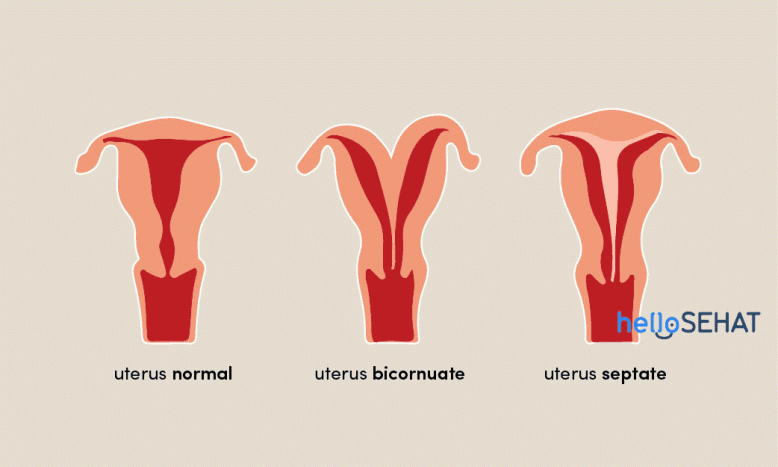Definition, Causes, and Correct Treatment

What is a miscarriage (abortion)?
Launching from the Mayo Clinic, miscarriage (abortion) is the sudden death of an embryo or fetus before 20 weeks of gestation or before 5 months.
Most cases occur before the 13th week of pregnancy. After 20 weeks of age, the risk usually gets smaller.
Abortion is a sign that something is wrong in the pregnancy or the fetus is failing to develop properly.
At the time of a miscarriage, women usually experience bleeding and cramps.
This is caused by contractions that work to shed the contents of the uterus, namely large blood clots and tissue.
If it happens quickly, the miscarriage can usually be resolved by the body without complications.
If an abortion occurs but the woman does not know that she has this condition, drugs can be given to stimulate contractions.
The process of dilation and curettage is carried out when the woman has experienced a lot of bleeding but without any shedding of tissue followed.
Dilation is done to open the cervix (cervix) if it is still closed and curettage is the process of removing the contents of the uterus using a suction and scraping device.
How common is this condition?
Miscarriage is a common complication of pregnancy. At least about 10-20 percent of pregnancies fall prematurely.
There are more than 80 percent of reported cases of miscarriage occurring in the first trimester of pregnancy.
Still quoting from the Mayo Clinic, sabout 50 percent of pregnancies are terminated when the woman is not even aware that she is pregnant.
Pregnant women can avoid complications of this abortion by avoiding the risk factors and taking further prevention.
Talk to your doctor for more information.
Types of miscarriage
Miscarriage there are many types. Each pregnant woman may experience different types, depending on the extent of her pregnancy.
Each type can show different symptoms. The following types of miscarriage must be understood:
- Iminence abortion
- Incipient abortion
- Incomplete or incomplete abortion (incomplete miscarriage)
- Complete or complete abortion (complete miscarriage)
- Missed abortion (miscarriage secretly)
The different types of abortion are based on the level of pain in the abdomen, typical symptoms, and whether the cervix is closed or not.
Miscarriage signs and symptoms
Miscarriage can occur consciously or unconsciously because there are no obvious signs.
The most common symptoms and signs of miscarriage are:
- Bleeding or spotting, appearing from mild to severe
- Stomach and lower back pain or cramps that are severe
- The vagina secretes non-whitish discharge or tissue
- Fever
- Sluggish
Some of the other symptoms or signs of miscarriage may not be listed above. If you feel anxious about these symptoms, consult a doctor immediately.
When to see a doctor?
Every body functions differently from one another. However, if you experience the signs or symptoms of a miscarriage above, see a doctor immediately to get the right treatment.
Women who have had a miscarriage usually need it right away undergoing dilation and curettage (D&C) This procedure aims to remove remnants of fetal tissue in the uterus.
Discuss with your doctor to find the best solution.
Causes of miscarriage
There are several things that cause miscarriage, including:
- Fetal problems
- Weak uterus (cervical incompetence)
- Untreated maternal disease
- Polycystic ovary syndrome (PCOS)
- Bacterial infection
- Smoking, alcohol, drugs, and exposure to environmental toxins (Mothers who are active or passive smokers)
Higher exposure to environmental toxins such as industrial fumes, smoke from burning hospital laboratory items, or factory fumes can also cause the fetus to die in the womb.
Risk factors for miscarriage
There are many risk factors that can cause this condition to occur:
- Have had a previous miscarriage, at least two or more times
- Have chronic diseases such as uncontrolled diabetes mellitus
- Uterine or cervical disorders
- Smoking, alcohol, and illegal drugs
- Eat foods that trigger miscarriage
- Weight above or below average increases the risk of complications
- Have had an invasive prenatal test (taking chorionic villus samples and amniocentesis)
- Hormonal factors and maternal immune problems
- Pregnant over 35 years of age
- Uterine septate (uterine deformity)

Above is a description of the uterine septate or uterine deformity. which is a congenital condition.
Women with uterine septates have a 25-47 percent risk of miscarriage. Meanwhile, the risk of miscarriage in women with normal uterus is around 15 to 20 percent.
Diagnosis and treatment of miscarriage
The information described is not a substitute for medical advice. ALWAYS consult your doctor.
To diagnose a miscarriage, your doctor may order the following tests:
- Pelvic exam, to help the doctor find out if the cervix is getting dilated.
- An ultrasound or ultrasound test to check the heart rate and fetal development.
- Blood test for measurement of pregnancy hormone and beta HCG.
- Tissue test, to detect fetal tissue that has come out.
Tissue samples can be sent to the laboratory to confirm that the fetus has passed away.
Women who experience this condition should undergo a medical examination as recommended by an obstetrician.
The reason is, early symptoms such as abdominal cramps and spotting of blood are often ignored and considered menstruation.
If you experience heavy bleeding, fever, or stomach pain for several hours each day, call your doctor for medical help.
How is the handling procedure?
If you have a miscarriage that is not life threatening, your doctor will advise you to rest until the bleeding or pain goes away.
If the fetal tissue has passed out by itself, you will be advised to do a curette to remove the remaining fetal tissue from the uterus.
After curettage, periods will likely start again in 4-6 weeks.
To speed up cleaning of the uterus from the remaining fetus, the doctor may also prescribe certain drugs.
Entering the drug into the vagina is more effective and can reduce side effects such as nausea and diarrhea than taking oral medications.
Please consult further with your doctor about the type, dosage, and how to use the drug.
At home, your doctor may also be able to advise you You avoid exercising, having sex, or inserting anything into the vagina (such as tampons) for two weeks after the miscarriage.
How to prevent miscarriage
There are several ways to prevent the fetus from failing to survive in the womb, including:
1. Take folic acid supplements
Taking prenatal vitamins containing folic acid before or during pregnancy can prevent miscarriage.
Doctors recommend intake of 600 mg of folic acid per day as well to eliminate the possibility of birth defects.
2. Routine immunization
Several chronic conditions increase the risk of miscarriage. You can prevent such diseases through vaccination.
During pregnancy, you also need to have regular prenatal checks to ensure the growth and development of your baby in the womb
3. Exercise regularly
Exercising regularly is recommended to keep pregnancy healthy. During pregnancy, mothers are advised to do safe sports such as pilates and yoga.
Avoid strenuous exercise because it can increase your body temperature and reduce the amount of blood supply to the fetus.
4. Eat nutritious foods
It is obligatory for pregnant women to eat healthy foods. Pregnant women can consuming sea fish that are rich in omega-3 fatty acids.
The omega-3 fatty acids present in fish can help increase hormone production to reduce uterine inflammation.
In addition, also consume foods that contain whole grains such as whole grains and cereals that are good for keeping blood sugar levels in the body healthy.
When can you get pregnant again after a miscarriage?
You can wait until the time is right to try to get pregnant again. About 85 percent of women who have had a miscarriage can get pregnant again in good health until the time of birth.
Some things you can do to get pregnant again after an abortion or miscarriage are:
- Perform regular pregnancy checks
- Take care of nutritional intake
- Reduce stressful thoughts and feelings
- Do activities that are fun
At least wait until the menstrual cycle returns to normal and one menstrual period before starting to try to get pregnant again.
But most importantly, have to make sure yourself physically and mentally ready if want to get pregnant again after miscarriage.
Hello Health Group does not provide medical advice, diagnosis or treatment.
Miscarriage – Symptoms and causes. (2020). Retrieved 9 September 2021, from https://www.mayoclinic.org/diseases-conditions/pregnancy-loss-miscarriage/symptoms-causes/syc-20354298
Miscarriage. (2018). Retrieved 9 September 2021, from https://www.nhs.uk/conditions/miscarriage/
Miscarriages (for Parents) – Nemours KidsHealth. (2020). Retrieved 9 September 2021, from https://kidshealth.org/en/parents/miscarriage.html
Miscarriage: Risks, Symptoms, Causes & Treatments. (2020). Retrieved 9 September 2021, from https://my.clevelandclinic.org/health/diseases/9688-miscarriage
{{meta.og.title}}. (2020). Retrieved 9 September 2021, from https://www.pregnancybirthbaby.org.au/miscarriage
{{meta.og.title}}. (2020). Retrieved 9 September 2021, from https://www.pregnancybirthbaby.org.au/what-really-happens-during-a-miscarriage
The Miscarriage Association: Pregnancy loss information and support. (2020). Retrieved 9 September 2021, from https://www.miscarriageassociation.org.uk/
Miscarriage. (2020). Retrieved 9 September 2021, from https://www.marchofdimes.org/complications/miscarriage.aspx
Publishing, H. (2020). Miscarriage – Harvard Health. Retrieved 9 September 2021, from https://www.health.harvard.edu/a_to_z/miscarriage-a-to-z



